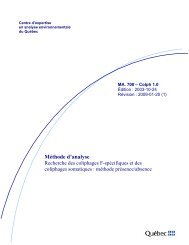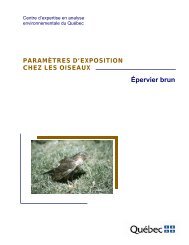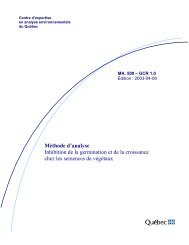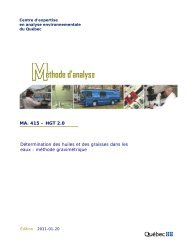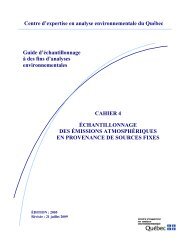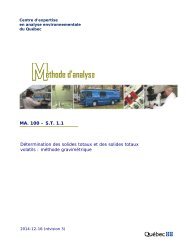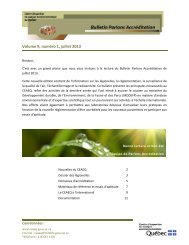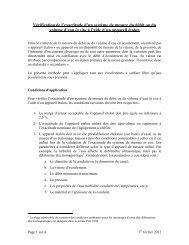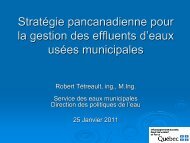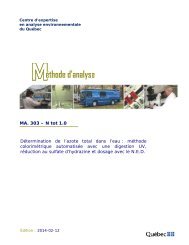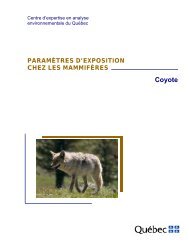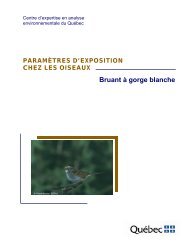Booklet 7 - Flow Measurement Methods in Open Channels
Booklet 7 - Flow Measurement Methods in Open Channels
Booklet 7 - Flow Measurement Methods in Open Channels
You also want an ePaper? Increase the reach of your titles
YUMPU automatically turns print PDFs into web optimized ePapers that Google loves.
1.3.2. Cont<strong>in</strong>uous flow measurementCont<strong>in</strong>uous flow measurements consist of a series of po<strong>in</strong>t-specific measurements at very close time<strong>in</strong>tervals (a few seconds apart), us<strong>in</strong>g <strong>in</strong>struments capable of record<strong>in</strong>g values dur<strong>in</strong>g the procedure.The advantage of this type of measurement is the fact that it can extend over an extended time period (afew hours to a few days) and reveals variations <strong>in</strong> flowrate that occurs dur<strong>in</strong>g this period. Informationthat is obta<strong>in</strong>ed is therefore more complete.This type of measurement usually requires a temporary or permanent primary measur<strong>in</strong>g device.1.4. Discharge system1.4.1. Closed conduitsA discharge is said to be <strong>in</strong> a closed conduit when the liquid is conf<strong>in</strong>ed <strong>in</strong> a pipe and subjected topressure that is greater than atmospheric pressure.1.4.2. <strong>Open</strong> conduitsA discharge is said to be <strong>in</strong> an open conduit when the surface of the water, so-called waterl<strong>in</strong>e, is <strong>in</strong>contact with the air and subjected to atmospheric pressure only.Conduits can be natural, such as streams and rivers, or artificial, such as channels for navigation,irrigation, dra<strong>in</strong>age ditches, sewer networks, etc.1.5. <strong>Flow</strong> pr<strong>in</strong>ciples <strong>in</strong> open conduitsStorm sewer and build<strong>in</strong>g dra<strong>in</strong>age systems are open conduits. The flow area is <strong>in</strong> contact with the airand is subjected to atmospheric pressure only. Because pressure cannot be forced from one end of theflow channel to the other end, the flowrate depends on the gradient of the slope of the channel and thefrictional drag along the walls. Because the flow is stable and uniform (streaml<strong>in</strong>ed), there is always aprogressive drop <strong>in</strong> water level from the beg<strong>in</strong>n<strong>in</strong>g to the end of the channel.In an open channel, the total energy conta<strong>in</strong>ed <strong>in</strong> the flow is the k<strong>in</strong>etic energy present <strong>in</strong> the form ofvelocity (Head Velocity) and the pressure energy due to the difference <strong>in</strong> water depth. Which producesthe follow<strong>in</strong>g equation:VTotal energy = + d2g2(8)whereVgdis the flowrate;is the gravitational constant;is the water depth measured from the channel bottom.Page 14 of 223<strong>Booklet</strong> 7 - <strong>Flow</strong> <strong>Measurement</strong> <strong>Methods</strong> <strong>in</strong> <strong>Open</strong> <strong>Channels</strong>



